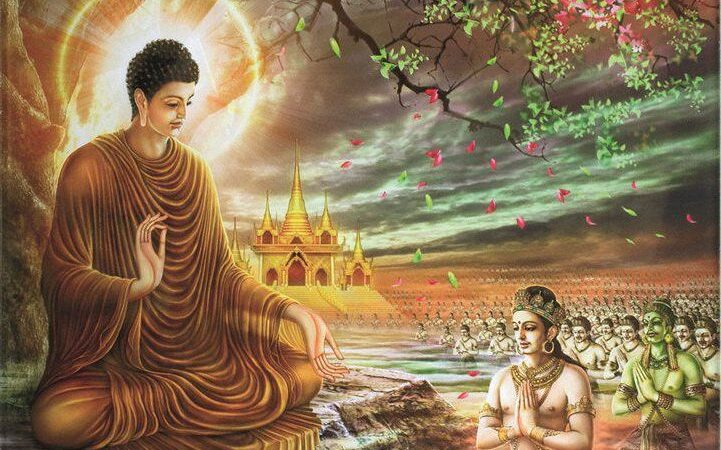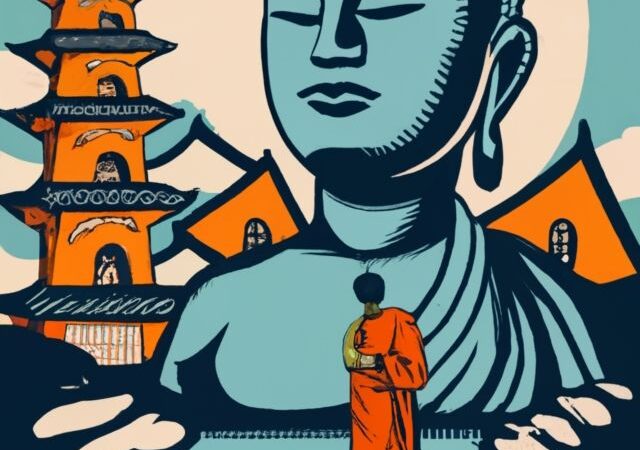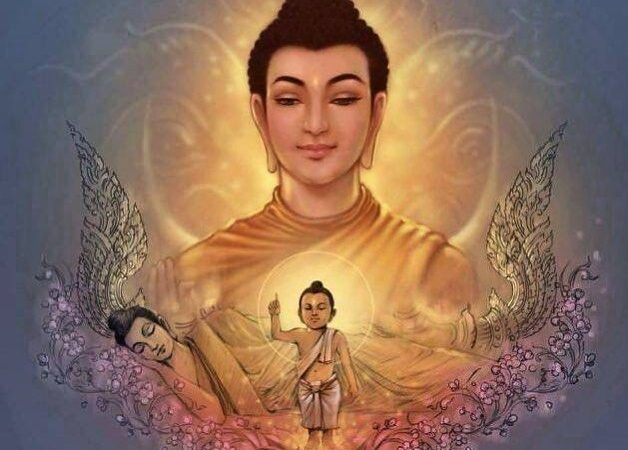"The Mystery of Siddhartha's journey to becoming the Buddha."
During a period of social and religious change, Siddhartha was born in Lumbini (in contemporary Nepal). Hinduism (Sanatan Dharma, “Eternal Order”) was the predominant religion in India at the time, but several philosophers of the time had started to cast doubt on its veracity, the validity of the Vedas (the Hindu scriptures), and the activities of the priests.
Siddhartha Gautama, also known as the Buddha, lived from around 563 to 483 BCE and was a Hindu prince who gave up his position and wealth to pursue enlightenment as a spiritual ascetic. After achieving his goal, he preached his path to others, which led to the establishment of Buddhism in India in the 6th and 5th centuries BCE.
Although most of the details of his life are stories, Siddhartha is regarded as a real historical character and a younger contemporary of Mahavira, who founded the principles of Jainism not long before Siddhartha’s period (599–527 BCE; also known as Vardhamana).
How did Siddhartha get
the name Buddha?
Because Siddhartha Gautama attained spiritual enlightenment after 49 days of meditation under a Bo-tree, he is referred to as the Buddha, which translates as “Enlightened/Awakened One.”Because of Siddhartha Buddhism grew very fast and there are many Buddhist temples all over the world in India, there are many temples for example Bodh Gaya, Sarnath, Mahabodhi Temple, etc.
"The Historical Story of Siddhartha's Path to Becoming Buddha."
In the narrative, Siddhartha was born at Kapilvastu, where King Suddhodana and Queen Mahamaya resided. A wise man named Kala Devala warned the young, compassionate Siddhartha that he would experience experiences that would make him unhappy and cause him to run away to the woods. The swan belonged to the person who saved it, not the person who tried to kill it, according to Siddhartha, a wise man.

Princess Yashodhara was Siddhartha’s wife, yet he was unhappy at the palace. He decided to leave his house in quest of happiness, and he secretly traveled to the Anoma River with his servant Channa. Siddhartha left the room holding a bowl while donning an orange robe and shaving his long hair. After meditating and requesting the way to happiness, he ultimately discovered it.
As he developed into a wise man who valued and treated animals with compassion, people started to call him Gautama Buddha. He was well-known for his teachings and had a sizable following. His loved ones greeted him as he arrived back in Kapilvastu. Ananda adopted him as his dedicated disciple and preached for 45 years.
Principles & Teachings Given By Gautam Budh
Although he could now enjoy life to the fullest and do as he liked, he instead decided to show others the way to freedom from ignorance and wanted, and help them put an end to their suffering. At his first preaching, he presented his listeners with the Four Noble Truths and the Eightfold Path in the Deer Park at Sarnath. These are the Four Noble Truths:
● Life is terrible.
● The root of misery is desire.
● Along with the cessation of yearning comes the end of misery.
● There is a route that takes one out of desire and pain.

The fourth truth points one in the direction of the Eightfold Path, which serves as a roadmap for avoiding the sort of attachment that entails suffering:
● Right Perspective
● Right Purpose
● Right Words
● Right Deeds
● Right Livelihood
● Right Effort
● Right Mindfulness
One is released from the Wheel of Becoming, which is a metaphor for life, through realizing the Four Noble Truths and adhering to the Eightfold Path’s rules. Ignorance, desire, and aversion are the three forces at work at the wheel’s hub. Human, animal, ghost, demon, god, and hell-beings are the six types of existence that reside between the hub and the rim of the wheel. The causes of suffering, including body-mind, consciousness, sensation, hunger, grasping, and many more that tie one to the wheel and make them suffer, are pictured along the wheel’s rim.
The Ascetic Way and Humanism By Gautam Budha
Initially, Siddhartha sought out the eminent instructor Arada Kalama, with whom he studied until he had learned everything Kamala knew. However, the “attainment of nothingness” he attained did not relieve Siddhartha of his agony. He later enrolled as a pupil of Udraka Ramaputra, who taught him how to stifle his cravings and achieve a condition of being “neither conscious nor unconscious,” but this was insufficient for him because it did not address the issue of pain. He put himself through the strictest ascetic regimens, perhaps after a Jain model, and finally lived off of only one grain of
rice every day, yet he was still unable to locate what he was seeking.

He stumbles into a river at this point in one version of his tale, struggling to keep his head above water, and is given guidance by a voice on the wind. In the most well-known version, a milkmaid called Sujata discovers him in the woods, mistaking him for a tree spirit due to his extreme malnourishment, and provides him with some rice milk. After being revived by the milk, he abandons his asceticism and travels to the adjacent hamlet of Bodh Gaya( Buddhist Temple), where he settles down on a bed of grass next to a Bodhi tree and makes a pledge to stay there until he discovers how to live pain-free.
Conclusion
“The existence of mortals in this world is troublesome, fleeting, and coupled with anguish, ” said the Buddha. Because death is a natural part of aging for all living things, there is no way for those who have been born to avoid it. He emphasized virtues like wisdom, kindness, patience, charity, and compassion. The five moral precepts of Buddhism bind all adherents and forbid: taking the lives of living creatures.
